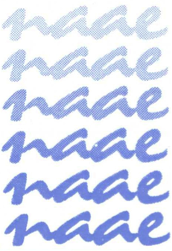NAAE’s Queensland Election Statement
In the lead-up to the Queensland State Election in late October, NAAE held a cross-sector roundtable to discuss the common concerns and possible solutions to the arts education and training crisis in Queensland.
Read the NAAE’s full pre-election statement.
The Queensland Department of Education outlines the shared vision for Queensland education as Equity and Excellence: Realising the potential of every student. In order for Queensland students to thrive academically, artistically, creatively and critically, they must have equitable access to arts education from Prep to Year 12, and have access to quality arts training and engagement opportunities post-school.
However, before excellence can be achieved, the incoming Queensland government must urgently address equity and access to arts education and training. We know, through research, that access to arts education in schools is strongly linked to socioeconomic advantage. This has only become more pronounced in Queensland following the COVID-19 pandemic, and the introduction of the ATAR system in Queensland. Arts Education and Arts Training is in crisis in Queensland and needs urgent intervention.
Key issues that need to be addressed include:
With the introduction of ATAR (Australian Tertiary Admission Rank) and the new Queensland Certificate of Education (QCE) system in 2019 in Queensland, there has been a steep decline to enrolments in Senior Arts subjects.
The application of an inter-subject scaling (managed by Queensland Tertiary Admissions Centre – QTAC) seriously scales arts results downwards, so that students perceive they are being disadvantaged by choosing to study an arts subject in senior schooling.
Decrease in arts-based university degrees in Queensland, impacting on arts education and the cultural sector. A decrease in time allocated to arts subjects in initial teacher education, particularly for primary teaching degrees.
We are calling for:
The Queensland Parliament’s Education, Employment, Training and Skills Committee to establish an inquiry into Arts Education (in schools) and Arts Training (in tertiary institutions) to analyse the current state of arts education and training and develop recommendations for improvements to ensure access, equity, and relevance.
An independent review of QTAC’s intersubject scaling for all senior subjects in Queensland.
Support for implementation of arts curricula across the five Arts subjects in Queensland, with targeted professional development and training, recognising and supporting the important role of professional associations in this process.
Increased funding and partnerships with Arts Queensland to specifically support the provision of teaching artists in schools to co-develop with educators’ arts engagement programs for students and teachers, especially in the regions.
